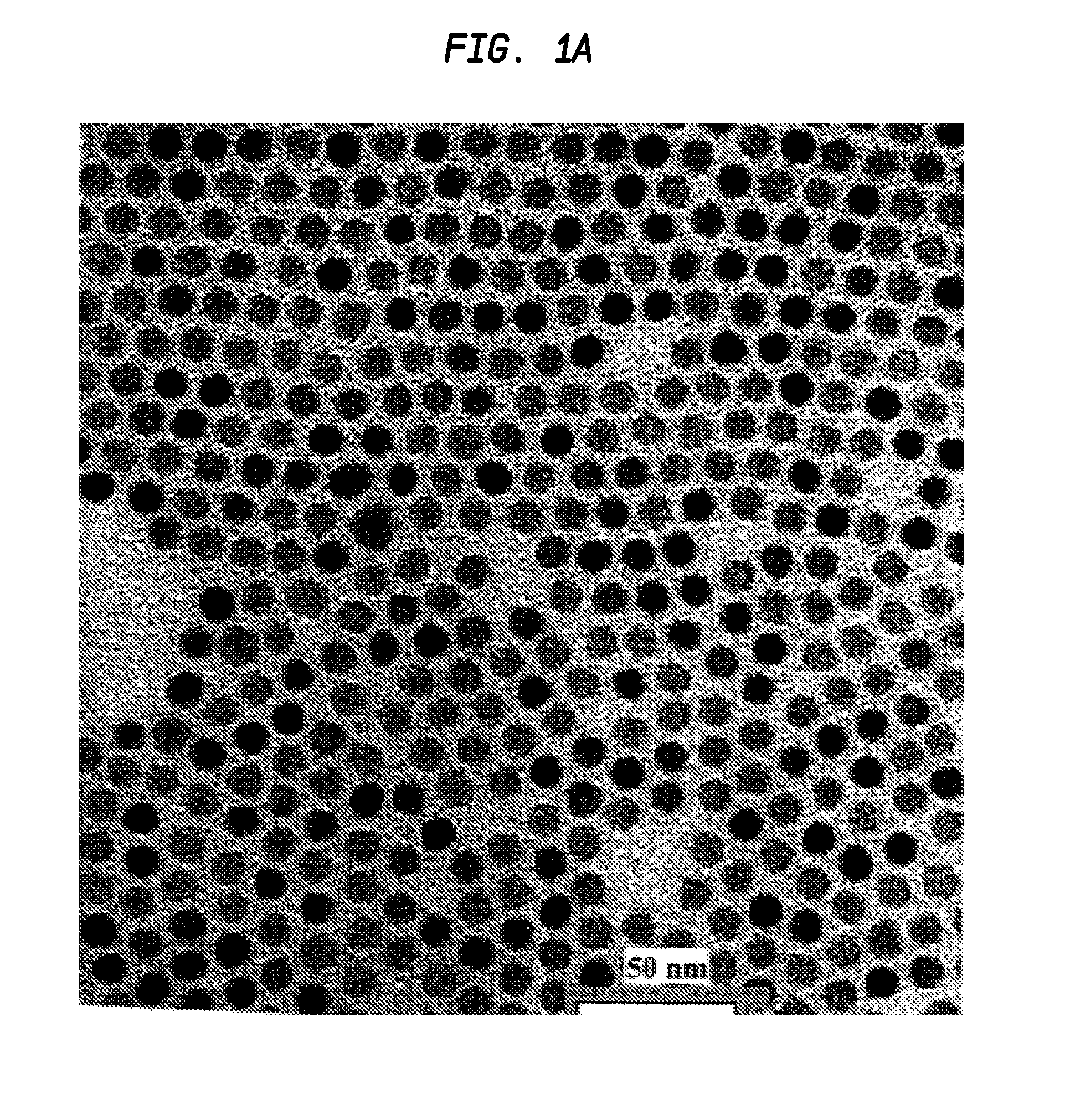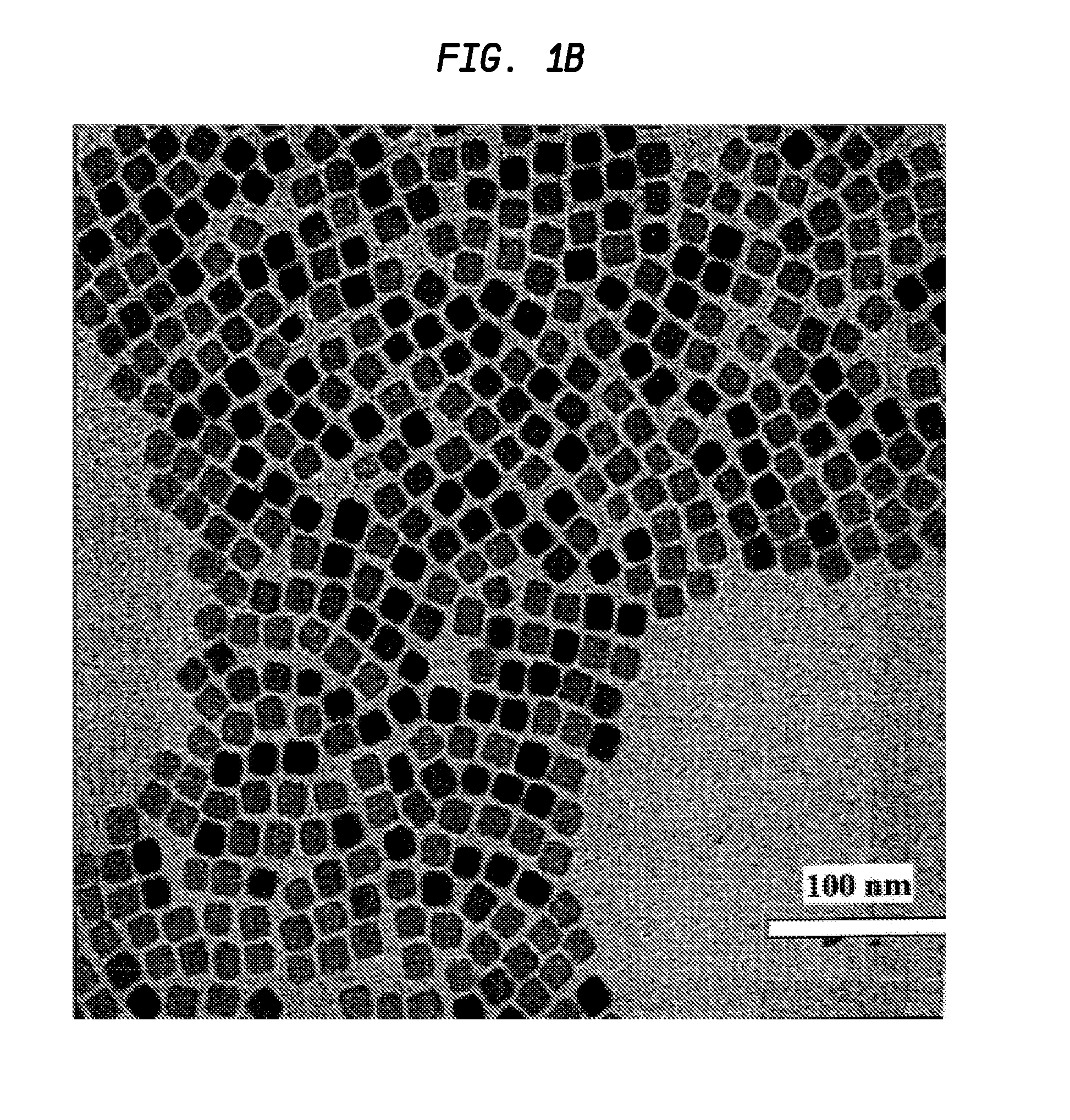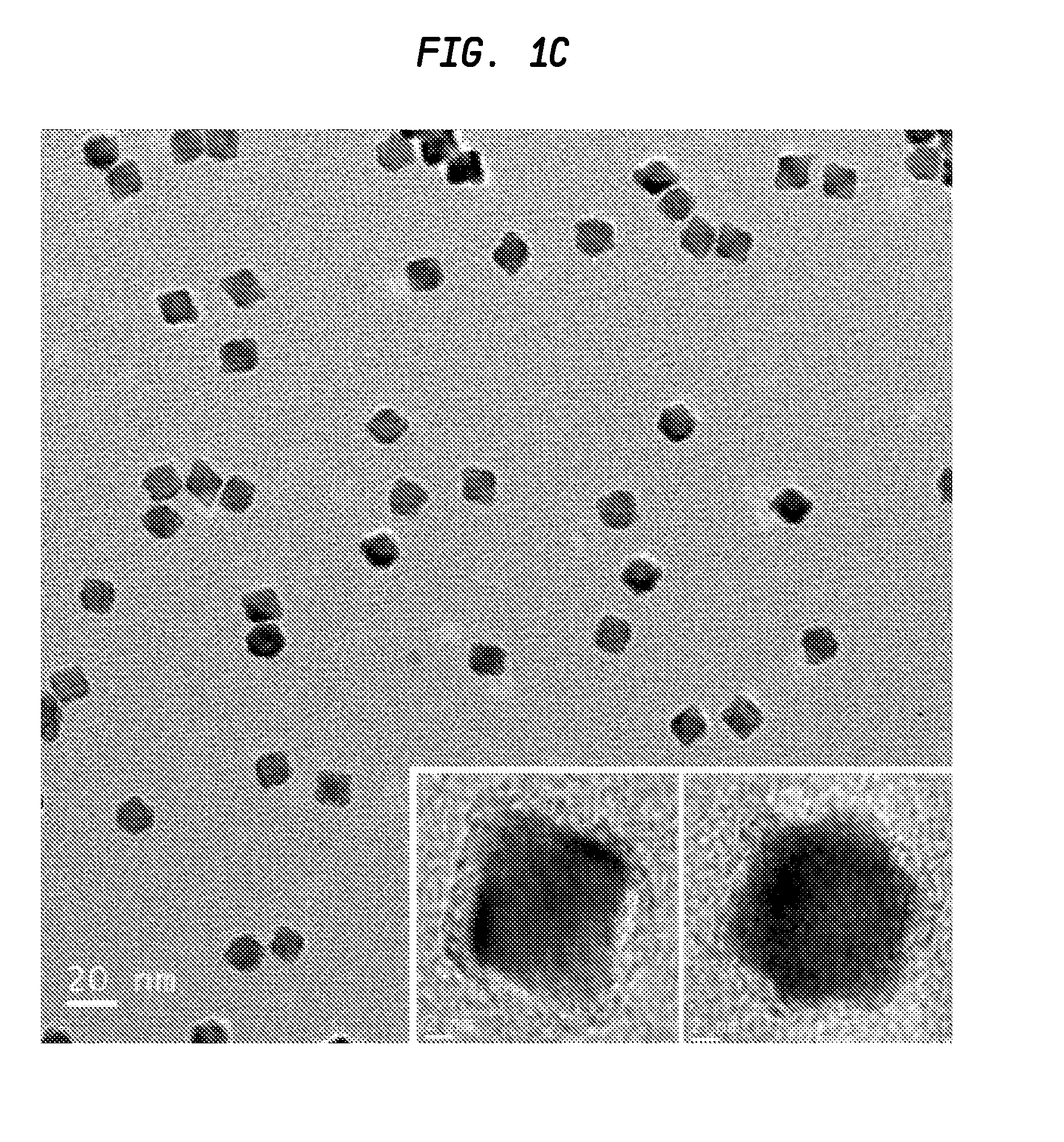Method for the preparation of IV-VI semiconductor nanoparticles
a technology of semiconductor nanoparticles and nanoparticles, which is applied in the field of semiconductor nanoparticles, can solve the problems of limited development technologies based on these materials, poor emission, and prior art nanocrystals trapped in glass matrix, and achieves controlled size, shape, composition, and high crystal quality. the effect of high crystal quality
- Summary
- Abstract
- Description
- Claims
- Application Information
AI Technical Summary
Benefits of technology
Problems solved by technology
Method used
Image
Examples
example
Synthesis and Characteristization of Pb Chalcogenide Nanoparticles
[0062]1.421 g of lead acetate trihydrate (or lead oxide (PbO)) and 5 ml oleic acid were added into a reaction vessel containing 20 ml diphenyl ether solution and heated to a temperature of about 150° C. for 30 min to form a lead oleate. After cooling to 60° C., this solution was mixed with 12 ml TOPSe (or TOPTe) stock solution to prepare injecting precursor. Reaction was carried out at various injecting and reaction temperatures. Also various molar ratio of lead oleate to TOPSe stock solutions were tested for injecting precursor to find the optimum conditions of reaction. Typically, injecting the precursor solution at 130° C. of 30 ml diphenylether solution and keeping the reaction temperature at 110° C. for 5 min yielded approximately 5 nm sphere PbSe quantum dots. For the synthesis of larger size (>10 nm) cubic shape PbSe dots, lower injecting temperatures (<110° C.) or second injection of additional precursors at a...
PUM
| Property | Measurement | Unit |
|---|---|---|
| temperature | aaaaa | aaaaa |
| diameter | aaaaa | aaaaa |
| water content | aaaaa | aaaaa |
Abstract
Description
Claims
Application Information
 Login to View More
Login to View More - R&D
- Intellectual Property
- Life Sciences
- Materials
- Tech Scout
- Unparalleled Data Quality
- Higher Quality Content
- 60% Fewer Hallucinations
Browse by: Latest US Patents, China's latest patents, Technical Efficacy Thesaurus, Application Domain, Technology Topic, Popular Technical Reports.
© 2025 PatSnap. All rights reserved.Legal|Privacy policy|Modern Slavery Act Transparency Statement|Sitemap|About US| Contact US: help@patsnap.com



